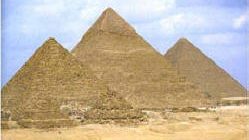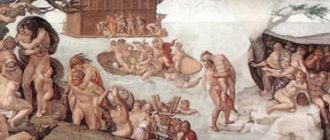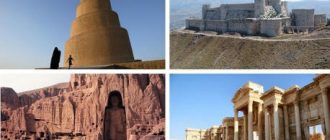Ruins of giant stone structures in the Zambezi and Limpopo is still a mystery to scientists. Information about them came back in the 16th century from Portuguese merchants who visited coastal areas of Africa in search of gold, slaves and elephant bones. Many believed then that it was about the biblical land of Ophir, where there were at one time the gold mines of King Solomon.
 Photo from open sources
Photo from open sources
MYSTERIOUS AFRICAN RUINS
Portuguese merchants hear of huge stone “houses” from Africans arriving at the coast to exchange goods from inland areas of the continent. But only in the 19th century did Europeans finally saw the mysterious buildings. According to some sources, the first to discover the mysterious ruins of a traveler and elephant hunter Adam Rendere, however more often their discovery is attributed to the German geologist Karl Mauhu.
This scientist has repeatedly heard from Africans about giant stone structures in unexplored areas north of the river Limpopo Nobody knew when and by whom they were built, and German the scientist decided to go on a risky journey to the mysterious the ruins.
In 1867, Mauh found an ancient country and saw a complex buildings later called Greater Zimbabwe (in the language the local Shona tribe, the word “Zimbabwe” meant “stone house”). The scientist was shocked by what he saw. The construction that appeared before him eyes, struck the researcher with its size and unusual layout.
 A photo from open sources
A photo from open sources
An impressive stone wall with a length of at least 250 meters and a height about 10 meters wide and at the base up to 5 meters wide surrounded the ancient settlement where, apparently, the ruler’s residence was once located this ancient country.
Now this structure is called the Temple, or Elliptical the building. It was possible to penetrate the territory fenced by the wall through three narrow passages. All buildings were erected by the dry method masonry, when the stones were stacked on top of each other without fastening solution. 800 meters north of the walled fortification on on top of a granite hill, there were ruins of another structure, dubbed the Stone Fortress, or Acropolis.
Although Mauh discovered some household items among the ruins, characteristic of local culture, it didn’t even occur to him that The Zimbabwean architectural complex could be built by Africans. Traditionally, local tribes built their houses and other structures, using clay, wood and dried grass, so use in the quality of the building material of the stone clearly looked abnormally.
ON THE GROUND OF GOLD MINES
So, Mauh decided that Greater Zimbabwe was not built by Africans, but white, who visited these parts in ancient times. By his the assumption that the construction of a complex of stone buildings could be involved the legendary king Solomon and the Queen of Sheba, and this is the place was the biblical Ophir, the land of gold mines.
 A photo from open sources
A photo from open sources
 A photo from open sources
A photo from open sources
The scientist finally believed in his assumption when found that the beam of one of the doorways was made of cedar. He could be brought only from Lebanon, and it was King Solomon widely used cedar in the construction of its palaces.
Ultimately, Karl Mauch concluded that it was the queen Sheba was the mistress of Zimbabwe. Such a sensational conclusion by a scientist led to rather dire consequences. To the ancient ruins of steel flock numerous adventurers who wanted to find the treasury of the Queen of Sheba, because once near the complex once there was an ancient gold mine. It is not known whether discover treasure for anyone, but the damage to the ancient structures was colossal inflicted, and this subsequently made it very difficult research by archaeologists.
Mauch findings in 1905 disputed by British archaeologist David Randall McIver. He conducted independent excavations in the Bolshoi Zimbabwe and said that the buildings are not so ancient and were built in the period from XI to XV century.
It turned out that the Great Zimbabwe could well be built by indigenous Africans. Getting to the ancient ruins was quite difficult, so The next expedition appeared in these parts only in 1929. Her headed by British feminist archaeologist Gertrude Caton-Thompson, her group included only women.
 A photo from open sources
A photo from open sources
By that time, treasure hunters had already done such damage to the complex, that Caton-Thompson was forced to start work with a search for the pristine buildings. The brave researcher decided to use for her search airplane. She managed to agree on a winged car, she personally took off with the pilot in the air and found herself far from Fortifications are another stone structure.
After the excavation, Cato-Thompson fully confirmed Ren Dall McKeever’s conclusions on the time of construction of Greater Zimbabwe. In addition, she firmly stated that the complex of structures without doubt was erected by black Africans.
AFRICAN STONEHENGE?
Scientists have been studying Greater Zimbabwe for almost a century and a half, however, despite such a long period, Greater Zimbabwe has managed keep a lot of secrets. It is still unknown from whom its builders defended themselves with such powerful defensive facilities. Not everything is clear with the start of their construction.
For example, under the wall of an elliptical building were discovered fragments of drainage wood that date from the period between 591 (plus or minus 120 years) and 702 year n. e. (plus or minus 92 years). Perhaps the wall was erected on a much more ancient foundation.
During excavations, scientists discovered several figures of birds from steatitis (soapstone), it has been suggested that the ancients the inhabitants of Greater Zimbabwe worshiped bird-like gods. Not it’s possible that this cult is somehow connected the mysterious building of Greater Zimbabwe – a conical tower near the wall Elliptical building. Its height reaches 10 meters, and the circumference bases – 17 meters.
 A photo from open sources
A photo from open sources
 A photo from open sources
A photo from open sources
It was built using the dry masonry method and is similar in shape to granaries of local peasants, but the tower has no entrance or windows, no stairs. The purpose of this building is still is an insoluble riddle for archaeologists.
However, there is a very interesting hypothesis of Richard Wade from Nkwe Ridge Observatory, according to which the Temple (Elliptical building) at one time was used similarly to the famous Stonehenge. Stone walls, a mysterious tower, various monoliths – all this was used to observe the sun, moon, planets and the stars. Is it so? The answer can only give further research.
CAPITAL OF A POWERFUL EMPIRE
At the moment, few scientists doubt that Greater Zimbabwe was built by Africans. According to archaeologists in XIV century, this African kingdom was in its prime and Square could compare with London.
 A photo from open sources
A photo from open sources
 A photo from open sources
A photo from open sources
Its population was about 18 thousand people. Big Zimbabwe was the capital of a vast empire that extended to thousands of kilometers and united tens, and possibly hundreds tribes.
Although mines were operating in the kingdom and mined gold, the main wealth of the inhabitants was cattle. Mined gold and ivory were transported from Zimbabwe to the east coast of Africa, where ports existed at that time, with their assistance supported trade with Arabia, India and the Far East. The fact that Zimbabwe had connections with the outside world, they say archaeological finds having Arabic and Persian origin.
It is believed that Greater Zimbabwe was the center of mining: on different distances from the complex of stone buildings discovered numerous mine workings. According to some scientists, African the empire existed until 1750, and then fell into decay.
It is worth noting that for Africans, Greater Zimbabwe is a real shrine. In honor of this archaeological site South Rhodesia, in whose territory it is located, in 1980 was renamed to Zimbabwe.
Andrey SIDORENKO
Africa Time Stones Stonehenge






